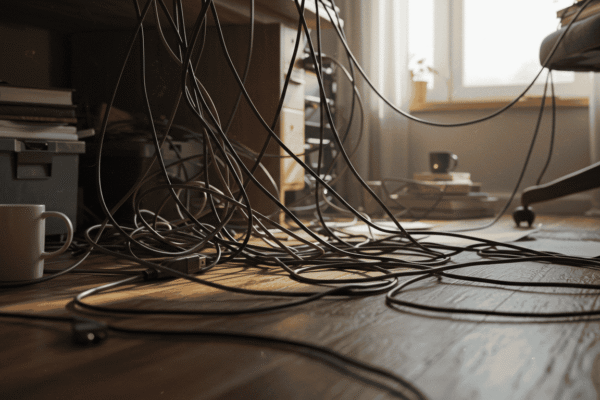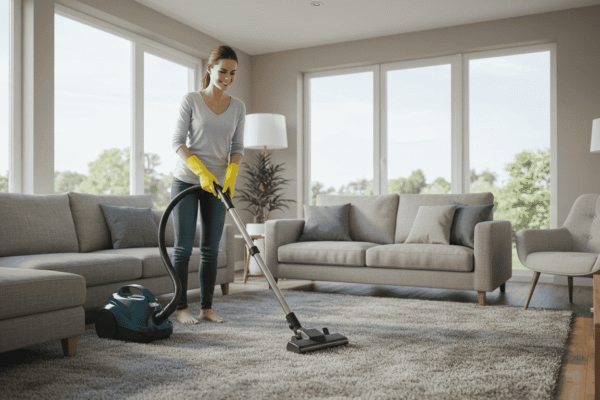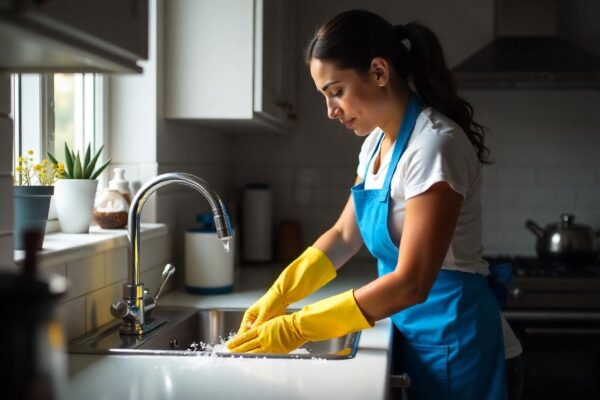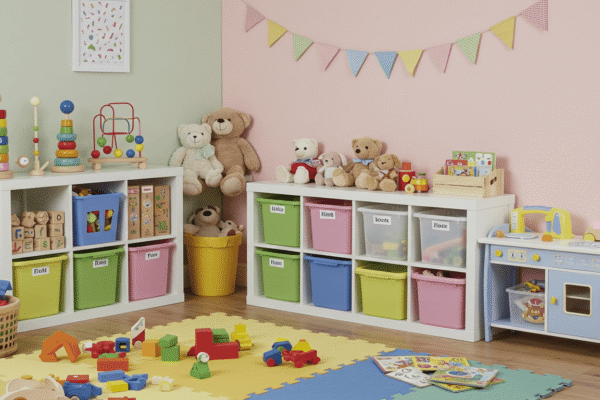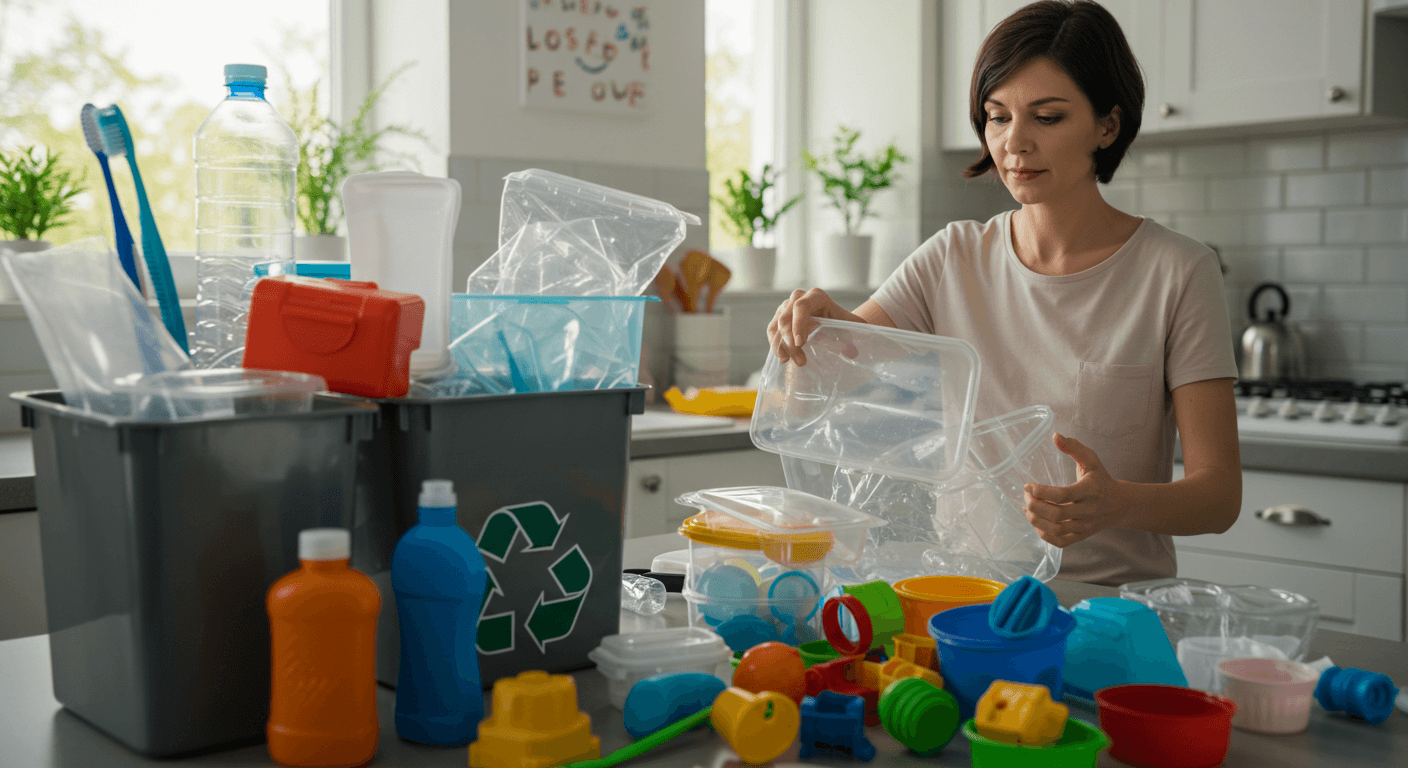Reduce plastic use at home—it sounds simple, but it’s one of the most powerful steps you can take for the planet. Every day, we rely on plastic without even realizing it: from packaging to cleaning supplies and everything in between. But the good news? Making small changes can lead to big results. In this post, we’ll explore practical, creative ways to reduce plastic use in your daily routine without sacrificing convenience or comfort. Whether you’re just starting your eco-friendly lifestyle or looking to take your plastic-free home game to the next level, these tips are designed to be helpful, realistic, and even a little fun. Let’s ditch the guilt and get into solutions that actually work.
The Plastic Audit: Know What You’re Up Against
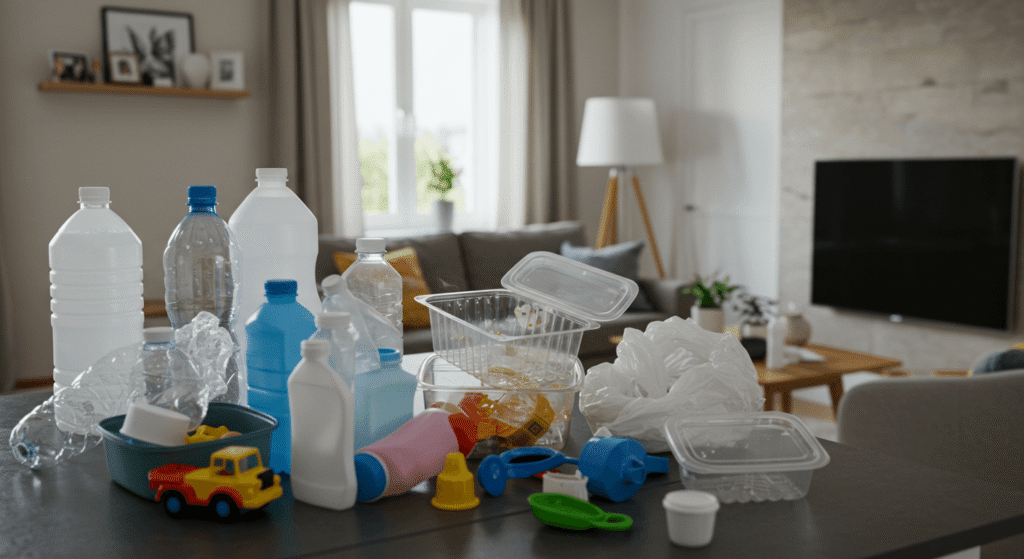
Before you can truly reduce plastic use, you need to understand how deeply it’s embedded in your home. A plastic audit is a simple but eye-opening exercise: go through each room and note down every item made of plastic. You’ll likely be surprised by how many “invisible” plastics surround you—not just the obvious ones like bags and bottles, but hidden ones in packaging, storage, and everyday tools.
Where Plastic Hides in Plain Sight
Plastic has a sneaky way of blending into our routines. Here’s a quick comparison of some common single-use plastic items versus their reusable or low-waste alternatives:
| Common Plastic Item | Reusable / Low-Waste Alternative |
|---|---|
| Plastic grocery bags | Cloth or jute shopping bags |
| Plastic food wrap | Beeswax wraps or silicone covers |
| Plastic straws | Stainless steel or bamboo straws |
| Disposable water bottles | Refillable glass or metal bottles |
| Plastic containers | Glass jars or stainless steel tins |
| Shampoo bottles | Solid shampoo bars |
| Plastic toothbrushes | Bamboo toothbrushes |
Doing a visual sweep like this—especially in your kitchen, bathroom, and cleaning closet—can help you spot easy wins for reducing plastic without disrupting your lifestyle.
Start With Small Swaps, Not Overhauls
It’s tempting to want to clear out every plastic item in one go, but that’s not sustainable—or necessary. A smarter and more effective approach is to replace one item at a time, ideally when it naturally runs out or breaks. This not only keeps costs down but also avoids waste from tossing out usable items.
Focus on easy wins first: switch to reusable water bottles, cloth shopping bags, or a non-plastic food storage option. Over time, these small swaps stack up, leading to a meaningful reduction in your household’s plastic footprint. The key is consistency, not perfection.
Kitchen Clean-Ups That Cut Plastic Fast
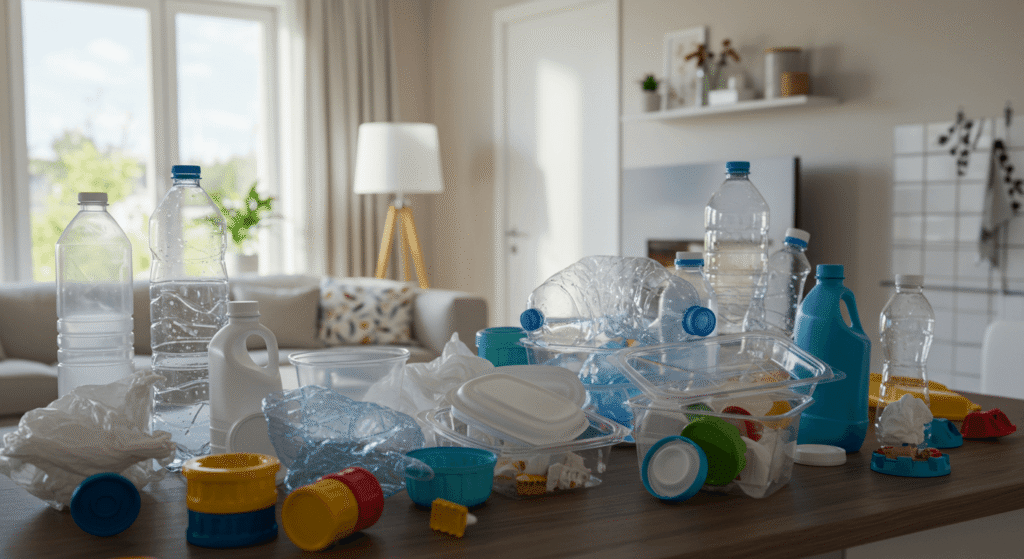
The kitchen is one of the biggest sources of plastic waste in most homes. From cling film to single-use containers, plastics are everywhere. But with a few simple changes, you can significantly reduce plastic use and keep your kitchen both practical and eco-friendly.
Ditch the Disposable Habits
Plastic wrap, sandwich bags, and single-use containers are convenient but create a lot of waste. Instead of reaching for cling film, try using reusable alternatives like fabric wraps or silicone lids. For packed lunches, swap out disposable sandwich bags for washable cloth bags or beeswax wraps. Avoid single-use plastic containers by opting for durable, reusable options that can go from fridge to freezer and even oven-safe.
Storage Solutions That Last
When it comes to food storage, glass jars, metal tins, and silicone containers are excellent alternatives to plastic. These options last longer, are easier to clean, and don’t leach chemicals into your food. Plus, they often look nicer on your shelves or counters, encouraging you to keep your kitchen neat and waste-free.
Bonus Tip: Create a “reuse drawer” or shelf in the kitchen for repurposed containers
Set aside a dedicated space in your kitchen to store jars, tins, and containers that you can reuse. This makes it easy to grab a suitable container for leftovers or bulk goods without resorting to plastic. It also helps keep clutter down and encourages a habit of reuse over disposal.
Smarter Shopping Without the Plastic Guilt
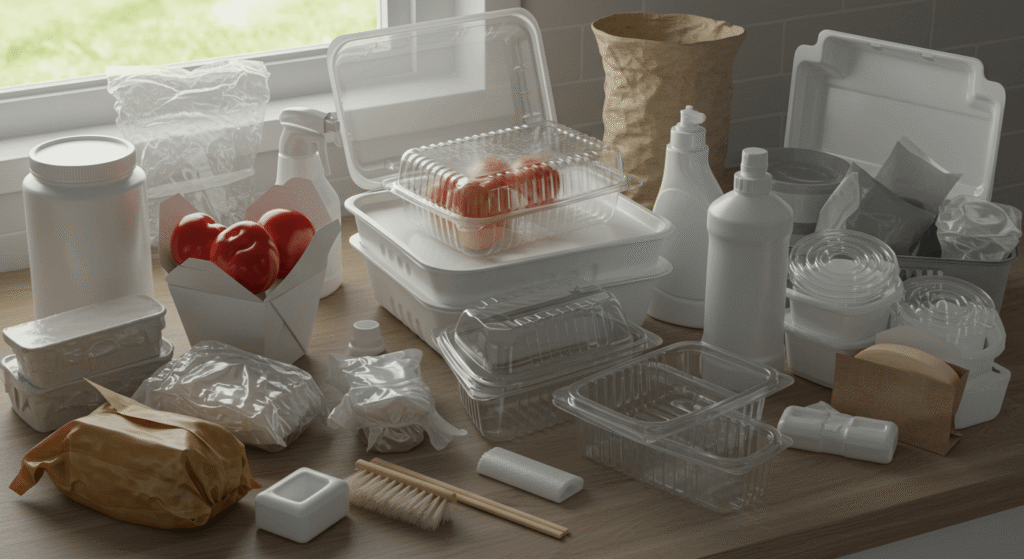
One of the easiest ways to reduce plastic use is to change how you shop. With a few simple strategies, you can cut down on single-use plastics and make more sustainable choices without sacrificing convenience.
BYO (Bring Your Own) Strategy
Bring your own cloth bags, produce sacks, and refillable containers to the store. These small items can replace countless plastic bags and packaging materials, especially for fruits, vegetables, bulk foods, and deli items. Keeping these reusable bags and containers in your car or shopping tote makes it easier to remember them and reduces your reliance on plastic at checkout.
Learn the Language of Packaging
Understanding packaging labels helps you make informed choices and dispose of items correctly. Here’s a quick guide to common packaging symbols you’ll find on plastic and other materials:
| Packaging Symbol | What It Means | What to Do With It |
|---|---|---|
| ♻️ Recycling | Material can be recycled | Place in recycling bin |
| Compostable | Breaks down naturally | Compost if facility available |
| Plastic #1–7 | Type of plastic resin | Check local recycling rules |
| Green Dot | Producer funds recycling | Varies by country |
| Tidy Man | Encourages litter control | Dispose responsibly |
Knowing these symbols can help you choose packaging that aligns with your zero-waste goals and avoid plastics that are difficult to recycle or harmful to the environment.
The Bathroom Swap You Never Thought Of
The bathroom is a surprising hotspot for plastic waste. Many everyday toiletries come wrapped in or made from plastic, often without us even realizing the impact. To truly reduce plastic use, tackling these sneaky offenders is key.
Sneaky Plastic Offenders in Toiletries
Items like cotton buds, shampoo bottles, razors, and toothpaste tubes all contribute to plastic waste. Cotton buds often come individually wrapped in plastic, and many razors are designed to be disposable. Shampoo and conditioner bottles can be bulky plastic containers that quickly add up in landfill waste.
The Power of Bar Swaps & DIY Ideas
Switching to solid bars is a simple, effective way to cut down on plastic in your bathroom. Bar soap and shampoo bars come with little or no packaging and last longer than their liquid counterparts. You can also try DIY recipes for scrubs or toothpaste, which let you control the ingredients and packaging.
Simple Recipe Box
Try this easy homemade sugar scrub to exfoliate naturally:
- 1/2 cup sugar
- 1/4 cup coconut oil
- A few drops of essential oil (optional)
Mix ingredients well and store in a glass jar. Use gently on skin for a refreshing, plastic-free scrub.
For toothpaste, mix baking soda with a small amount of coconut oil and a drop of peppermint essential oil for a natural alternative without plastic tubes.
Cleaning Green: Low-Waste Ways to Stay Sparkling
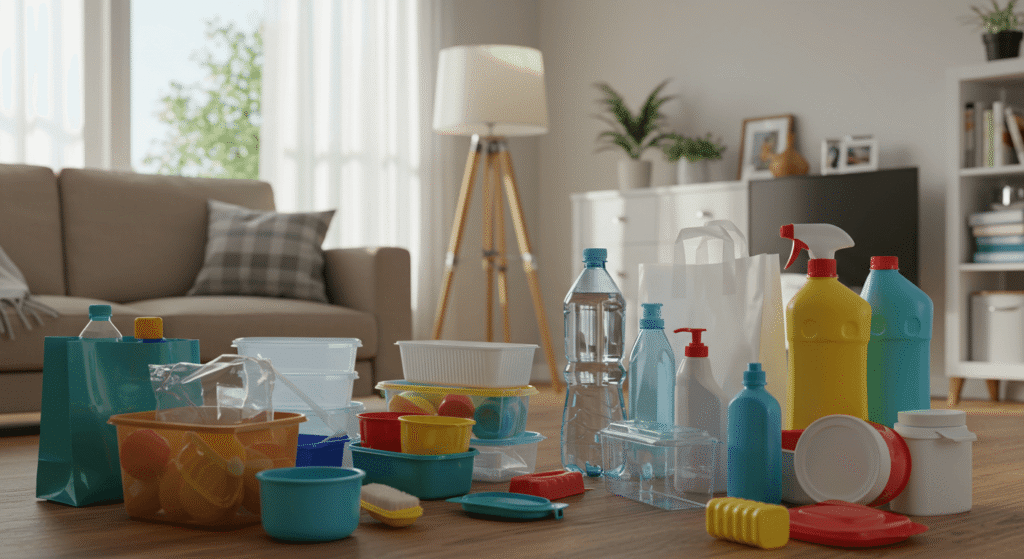
Cleaning your home doesn’t have to mean piling up plastic waste. By choosing natural ingredients and eco-friendly tools, you can keep your space spotless while dramatically reducing plastic use.
Natural Ingredients, Zero Plastic
Common kitchen staples like vinegar, baking soda, and lemon are powerful, plastic-free cleaning agents. They’re non-toxic, affordable, and multi-purpose—perfect for everything from cleaning windows to deodorizing drains. Using these natural ingredients eliminates the need for many plastic-packaged chemical cleaners, cutting down waste and harmful chemicals in your home.
Cleaning Tools That Don’t Trash the Planet
Switch to cleaning tools made from sustainable materials like wooden brushes, natural fiber cloth rags, and metal scrapers. These last longer than plastic sponges or brushes and are often biodegradable or recyclable at the end of their life.
Mini Checklist: Plastic-Free Cleaning Starter Kit
- Wooden dish brush with replaceable head
- Cloth cleaning rags or reusable microfiber cloths
- Glass spray bottles for homemade cleaners
- Metal or silicone scrubbers
- Natural soap bars for tough stains
This simple kit helps you get started with low-waste cleaning while avoiding the plastic clutter that often comes with commercial products.
Storage & Organization Without the Plastic Parade
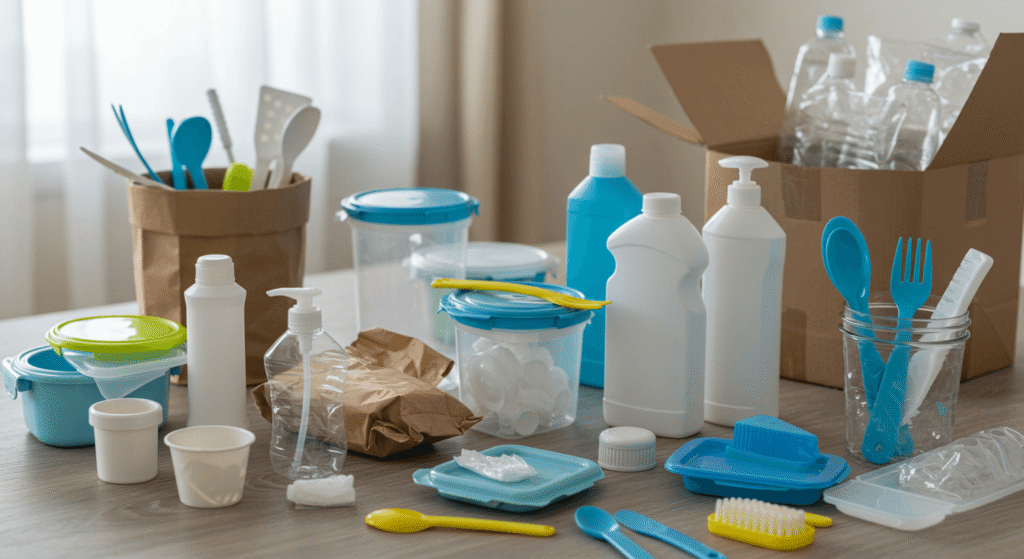
Organizing your home can be both stylish and sustainable when you ditch the usual plastic bins and containers. By embracing creative reuse and thoughtful labeling, you can reduce plastic use while keeping everything tidy and accessible.
Creative Reuse: From Jars to Baskets
Look around your home for glass jars, metal tins, wooden crates, and woven baskets. These versatile items make excellent storage solutions for pantries, drawers, and closets. Glass jars are perfect for storing dry goods like grains and nuts, while baskets and crates add rustic charm and function to closets and shelves. Repurposing these items not only cuts down on plastic but also adds personality to your space.
Labeling & Sorting with Low Waste in Mind
Switch to eco-friendly labeling methods like chalkboard labels, fabric bins, or DIY paper tags tied with twine. These options are reusable, easy to update, and avoid the wastefulness of plastic labels or stickers. Labels help keep your space organized and encourage everyone in the household to put things back in their place without adding to plastic clutter.
| Plastic Item | Creative Reuse Option | Looks Great Where? |
|---|---|---|
| Plastic storage bins | Woven baskets or crates | Closet shelves or laundry rooms |
| Plastic spice containers | Glass jars with chalk labels | Kitchen pantry |
| Plastic drawer dividers | Wooden or bamboo trays | Desk drawers or kitchen drawers |
| Plastic tags/labels | Fabric labels or paper tags | Toy boxes or craft supplies |
This simple swap list shows how you can easily replace plastic storage with sustainable alternatives that work beautifully around your home.
Family & Kids: Raising a Plastic-Smart Generation
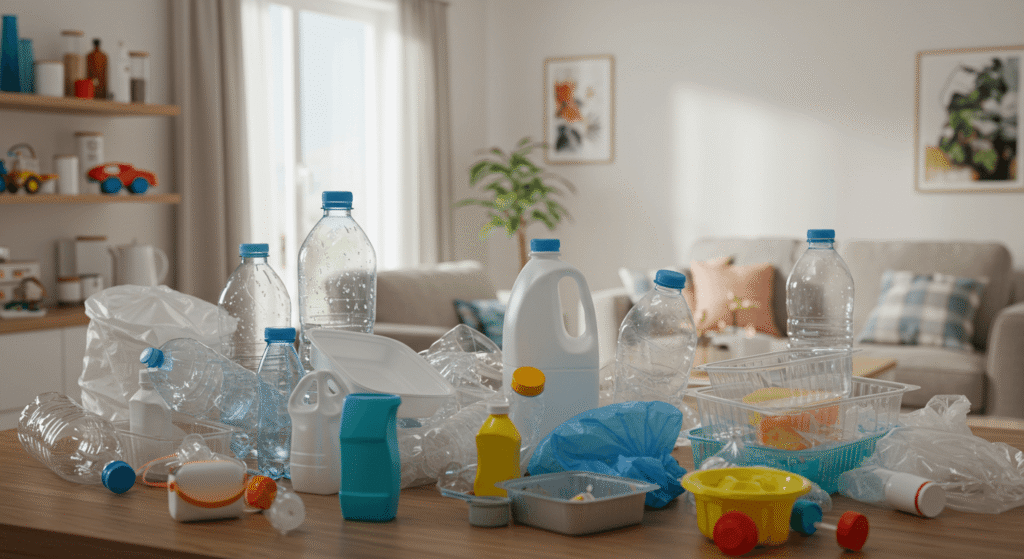
Teaching children to reduce plastic use early helps build lifelong habits that benefit the planet. Making sustainability fun and engaging is the key to inspiring a plastic-smart generation.
Teach Through Action
Kids learn best by doing. Create fun challenges like a “Plastic-Free Week” where the family avoids single-use plastics, or use sticker charts to track progress. Incorporate games that teach about recycling, waste reduction, and the impact of plastics on the environment. These activities make learning about sustainability interactive and memorable.
Plastic-Free Lunches Made Simple
Packing lunches and snacks without plastic can be easier than you think. Use reusable lunchboxes, beeswax wraps, and stainless steel containers instead of plastic bags and wraps. Encourage kids to help prepare their lunches with fresh fruits, veggies, and homemade treats packed in sustainable containers.
Interactive Suggestion:
Include a printable “Plastic-Free Points” reward chart that families can use to motivate kids. Points can be earned for actions like remembering reusable bags, finishing a plastic-free lunch, or helping with waste sorting. This simple tool encourages positive habits and family teamwork toward reducing plastic use.
Long-Term Habits for a Plastic-Lite Lifestyle
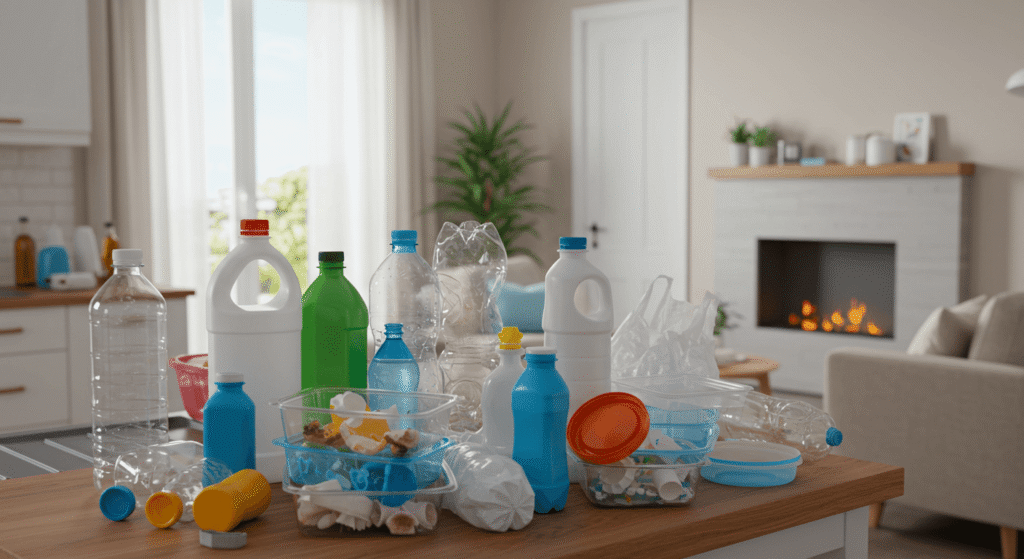
Building lasting habits is the best way to reduce plastic use sustainably. It’s not about perfection, but about making consistent choices that add up over time.
Weekly Routines That Stick
Set simple weekly routines like planning grocery trips with reusable bags and refillable containers, prepping meals to avoid single-use packaging, and sorting recyclables correctly. These small actions help you stay on track and reduce plastic waste without feeling overwhelmed.
Community Power: Swap, Share & Learn
Get involved with your local community by hosting swap events, where you can exchange items like clothes, toys, or household goods instead of buying new plastic-packaged products. Seek out bulk stores that allow refills to cut down on packaging. Joining sustainability groups or online forums can also provide support, inspiration, and tips from like-minded people.
End With a Pledge
Challenge yourself to commit to “One Month, One Plastic-Free Habit.” Whether it’s refusing single-use straws, switching to bar soap, or bringing your own bags every shopping trip, this pledge is a manageable way to build momentum toward a plastic-lite lifestyle. Encouraging readers to take this step turns awareness into action and makes lasting change achievable.
Reduce Plastic Use and Embrace a Greener Home Lifestyle
Reducing plastic use is not just a trend—it’s a vital step toward a healthier planet and a cleaner home. By adopting simple swaps, thoughtful habits, and involving your family and community, you can make a real difference. Remember, every small change adds up, and with patience and persistence, a plastic-lite lifestyle is within everyone’s reach. Start today, and enjoy the benefits of a greener, more sustainable home.

